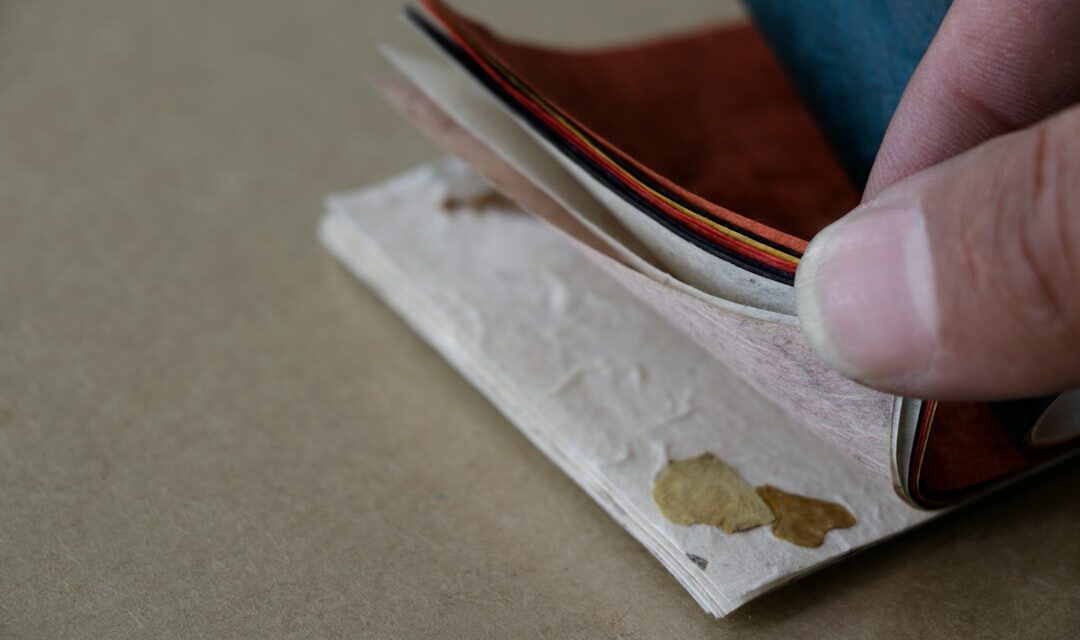Assemblage is a multifaceted art form that involves the combination of various objects and materials to create a cohesive artwork. Unlike traditional sculpture, which often relies on a single medium such as stone or metal, assemblage embraces a diverse array of found objects, discarded materials, and everyday items. This eclectic approach allows artists to explore themes of identity, memory, and the passage of time, as they juxtapose disparate elements to evoke new meanings.
The beauty of assemblage lies in its ability to transform the mundane into the extraordinary, inviting viewers to reconsider their perceptions of both the materials used and the narratives they convey. At its core, assemblage is an exploration of the relationship between objects and their contexts. Artists often select items that carry personal significance or cultural resonance, weaving them into a narrative that speaks to broader societal issues.
This art form encourages a dialogue between the viewer and the artwork, as each piece can be interpreted in myriad ways depending on individual experiences and perspectives. The tactile nature of assemblage also engages the senses, drawing audiences into a physical interaction with the work. As such, assemblage serves not only as a visual experience but also as a conceptual one, challenging traditional boundaries of artistic expression.
Summary
- Assemblage is an art form that involves creating three-dimensional artworks by combining found objects and materials.
- The history of assemblage can be traced back to the early 20th century, with artists like Pablo Picasso and Marcel Duchamp being early pioneers of the movement.
- Assemblage artists use a wide range of materials and techniques, including welding, gluing, and sculpting, to create their artworks.
- Famous assemblage artists include Louise Nevelson, Joseph Cornell, and Robert Rauschenberg, who have made significant contributions to the development of the art form.
- Assemblage continues to be a popular and influential art form in contemporary art, with artists using it to explore themes of identity, consumerism, and environmentalism.
The History of Assemblage
Early Influences: The Dada Movement
Dadaists like Marcel Duchamp famously utilised found objects in their work, elevating everyday items to the status of art and challenging established norms. This radical approach laid the groundwork for future generations of artists who would further explore the potential of assemblage.
Evolution and Diversification
As the 20th century progressed, assemblage gained prominence within various art movements, including Surrealism and Pop Art. Surrealists such as Max Ernst incorporated collage techniques and three-dimensional elements into their works, blurring the lines between reality and imagination. Meanwhile, Pop Art artists like Robert Rauschenberg and Claes Oldenburg embraced consumer culture, integrating commercial materials and imagery into their assemblages. This evolution reflected broader societal changes, as artists sought to comment on consumerism, identity, and the complexities of modern life.
Establishment and Innovation
By the late 20th century, assemblage had firmly established itself as a legitimate art form, with numerous artists pushing its boundaries and exploring new possibilities.
Materials and Techniques Used in Assemblage

Assemblage artists employ a wide range of materials in their creations, often sourcing items from thrift stores, flea markets, or even their own homes. Common materials include wood, metal, fabric, paper, plastic, and glass, each chosen for its aesthetic qualities or symbolic significance. The beauty of assemblage lies in its democratic approach to materials; anything can be transformed into art if it resonates with the artist’s vision.
This inclusivity allows for an endless variety of textures, colours, and forms, resulting in dynamic compositions that capture the viewer’s attention. In terms of techniques, assemblage artists often utilise methods such as gluing, welding, sewing, or nailing to combine their chosen materials. The process can be both intuitive and deliberate; some artists may begin with a specific concept in mind while others allow the materials themselves to dictate the direction of the work.
Layering is a common technique in assemblage, where objects are stacked or arranged in a way that creates depth and complexity. Additionally, artists may incorporate mixed media elements such as paint or photography to enhance their compositions further. This versatility not only enriches the visual experience but also allows for deeper exploration of themes and ideas.
Famous Assemblage Artists
Several artists have made significant contributions to the field of assemblage, each bringing their unique perspective and style to the medium. One notable figure is Joseph Cornell, whose intricate box constructions often featured found objects arranged in dreamlike compositions. Cornell’s work reflects his fascination with memory and nostalgia, as he created intimate worlds within his shadow boxes that invite viewers to engage with their own recollections.
His ability to evoke emotion through seemingly disparate elements has left an indelible mark on the art world and continues to inspire contemporary artists. Another prominent assemblage artist is Robert Rauschenberg, known for his innovative “Combines” that blurred the lines between painting and sculpture. Rauschenberg’s works often incorporated everyday objects such as clothing, newspapers, and photographs, challenging traditional notions of what constitutes art.
His playful yet thought-provoking approach encouraged viewers to reconsider their relationship with consumer culture and the environment around them. Rauschenberg’s legacy endures as he paved the way for future generations of artists to explore the possibilities inherent in assemblage.
Assemblage in Contemporary Art
In contemporary art, assemblage continues to thrive as artists experiment with new materials and concepts while addressing pressing social issues. Many contemporary assemblage artists draw inspiration from their surroundings, incorporating elements that reflect their cultural heritage or personal experiences. This practice not only enriches their work but also fosters a sense of connection between the artist and their audience.
As globalisation continues to shape our world, assemblage serves as a powerful medium for exploring themes of identity, migration, and community. Moreover, contemporary technology has expanded the possibilities for assemblage artists. Digital tools allow for new forms of creation and manipulation, enabling artists to blend traditional techniques with modern innovations.
Some artists incorporate digital media into their assemblages or use 3D printing to create unique components for their works. This fusion of old and new reflects the ever-evolving nature of art itself and highlights how assemblage remains relevant in addressing contemporary issues while pushing artistic boundaries.
How to Get Started with Assemblage

Embarking on an assemblage project can be an exciting journey for both novice and experienced artists alike. To begin, it is essential to cultivate an open mindset and embrace curiosity about everyday objects. Start by collecting items that resonate with you—these could be anything from vintage trinkets to discarded materials found in your environment.
The key is to gather a diverse array of objects that inspire you or evoke memories or emotions. Creating a dedicated space for your collection can help you visualise potential combinations and spark your creativity. Once you have amassed a selection of materials, consider sketching out your ideas or creating a mood board to help organise your thoughts.
This preliminary step can provide clarity on how you want to arrange your objects and what themes you wish to explore. As you begin assembling your artwork, remember that there are no strict rules; experimentation is encouraged! Play with different arrangements and techniques until you find a composition that resonates with you.
The process itself can be just as rewarding as the final piece, allowing you to discover new connections between materials and ideas along the way.
Tips for Creating Successful Assemblage Artworks
Creating successful assemblage artworks requires both creativity and thoughtful consideration of your chosen materials. One important tip is to pay attention to balance—both visually and thematically—within your composition. Consider how different elements interact with one another; contrasting textures or colours can create visual interest while reinforcing your intended message.
Additionally, think about scale; varying sizes of objects can add depth and dimension to your work while guiding the viewer’s eye through the piece. Another crucial aspect is storytelling; every object you choose carries its own narrative that can contribute to the overall meaning of your artwork. Reflect on how each item relates to your theme or concept and consider how they might evoke emotions or memories in viewers.
Incorporating personal elements can also enhance this connection; using items that hold significance for you can create a more intimate experience for those engaging with your work. Ultimately, successful assemblage art invites viewers into a dialogue—encouraging them to explore their interpretations while reflecting on their own experiences.
The Impact and Influence of Assemblage on the Art World
Assemblage has had a profound impact on the art world by challenging traditional definitions of art and expanding the boundaries of creative expression. Its emphasis on found objects has encouraged artists across various disciplines to reconsider their materials and explore new avenues for storytelling. This shift has led to a greater appreciation for everyday items as potential sources of inspiration, fostering a more inclusive understanding of what constitutes art in contemporary society.
Furthermore, assemblage has influenced numerous movements beyond visual arts, including literature and performance art. Writers have drawn upon its principles by incorporating fragmented narratives or found texts into their works, while performance artists have utilised assemblage techniques to create immersive experiences that engage audiences on multiple levels. As such, assemblage continues to resonate within diverse artistic practices today—serving as a testament to its enduring relevance and transformative power within the broader cultural landscape.
If you’re intrigued by the creative process and thematic depth of assemblage art, you might also find installation art compelling. Both forms involve the transformation of objects to create immersive environments, but installation art often occupies larger spaces and engages with the viewer’s entire surroundings. To explore this further, consider reading An Introduction to Installation Art, which provides a comprehensive overview of the technique, its history, and its impact on contemporary art. This article will enhance your understanding of how artists manipulate space and objects to communicate powerful messages.




